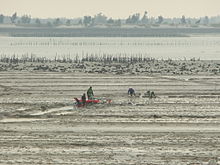
Clam is a common name for several kinds of bivalve molluscs. The word is often applied only to those that are edible and live as infauna, spending most of their lives halfway buried in the sand of the seafloor or riverbeds. Clams have two shells of equal size connected by two adductor muscles and have a powerful burrowing foot. They live in both freshwater and marine environments; in salt water they prefer to burrow down into the mud and the turbidity of the water required varies with species and location; the greatest diversity of these is in North America.

Venus is a genus of small to large saltwater clams in the family Veneridae, which is sometimes known as the Venus clams and their relatives. These are marine bivalve molluscs.

Ark clam is the common name for a family of small to large-sized saltwater clams or marine bivalve molluscs in the family Arcidae. Ark clams vary both in shape and size. They number about 200 species worldwide.

Ctenoides scaber, the flame scallop or rough fileclam, is a species of saltwater clam, a marine bivalve mollusc in the family Limidae. Despite their common name, flame scallops are not closely related to true scallops.

The common cockle is a species of edible saltwater clam, a marine bivalve mollusc in the family Cardiidae, the cockles. It is found in waters off Europe, from Iceland in the north, south into waters off western Africa as far south as Senegal. The ribbed oval shells can reach 6 centimetres (2.4 in) across and are white, yellowish or brown in colour. The common cockle is harvested commercially and eaten in much of its range.

Mya truncata, common name the blunt gaper or truncate softshell, is a species of edible saltwater clam, a marine bivalve mollusk in the family Myidae.
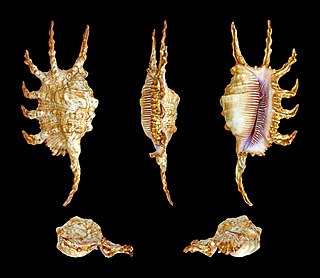
Lambis scorpius, common name the scorpion conch or scorpion spider conch, is a species of large sea snail, a marine gastropod mollusk in the family Strombidae, the true conchs.

Voluta is a genus of medium to large sea snails, marine gastropod molluscs in the family Volutidae, the volutes.

Stramonita haemastoma, common name the red-mouthed rock shell or the Florida dog winkle, is a species of predatory sea snail, a marine gastropod mollusc in the family Muricidae, the rock snails.
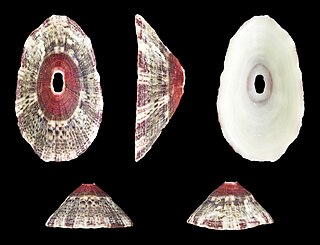
Fissurella nubecula, common name the cloudy keyhole limpet, is a species of sea snail, a marine gastropod mollusk in the family Fissurellidae, the keyhole limpets.

Nerita polita is a species of sea snail, a marine gastropod mollusk in the family Neritidae.
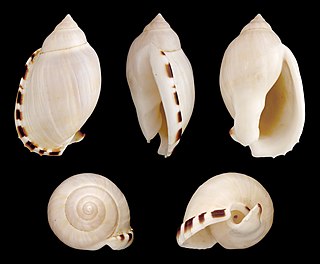
Casmaria erinaceus, common name : the common bonnet, is a species of large sea snail, a marine gastropod mollusk in the family Cassidae, the helmet snails and bonnet snails.
Lamelliconcha circinata, common name the "purple venus clam", is a species of bivalve mollusc in the family Veneridae, the venus clams. This species can be found around the coasts of the islands in the West Indies.

Pholas is a taxonomic genus of marine bivalve molluscs in the subfamily Pholadinae of the family Pholadidae.

Shuitou is a town of Nan'an City, in southern Fujian province, China.

Laevicardium crassum, the Norwegian egg cockle, is a species of saltwater clam, a cockle, a marine bivalve mollusc in the family Cardiidae, the cockles.

Acanthocardia echinata, the prickly cockle or European prickly cockle, is a species of saltwater clam, marine bivalve molluscs in the family Cardiidae. The genus Acanthocardia is present from the Upper Oligocene to the Recent.
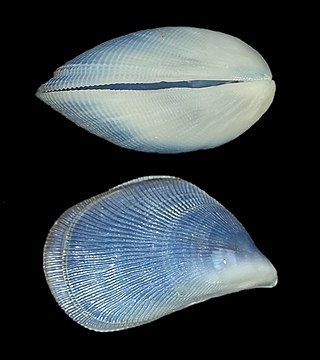
Septifer bilocularis is a marine bivalve species in the family Mytilidae, the mussels.

Pinna muricata is a species of bivalves belonging to the family Pinnidae.

